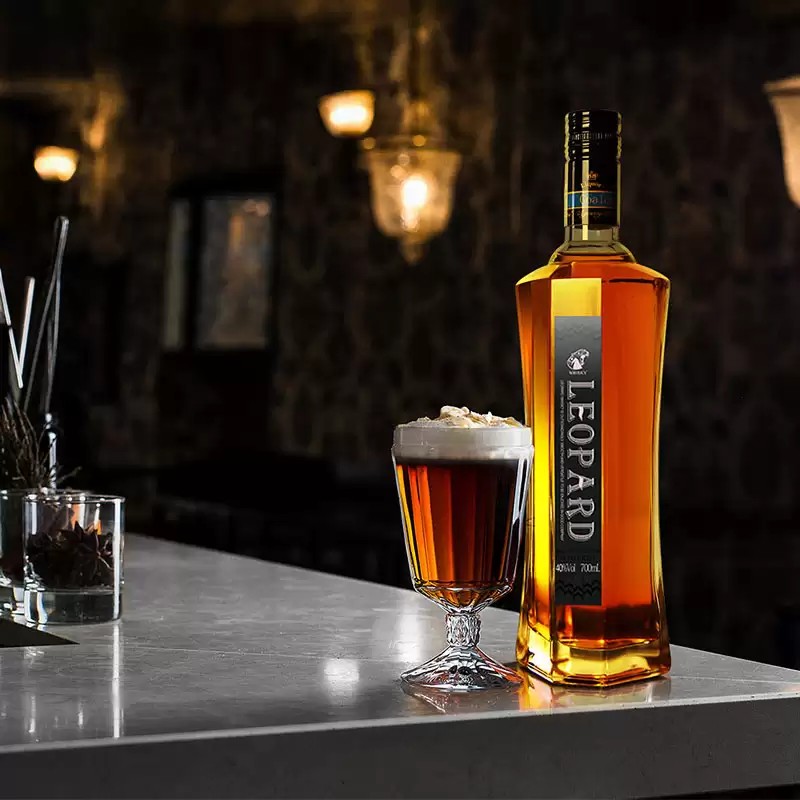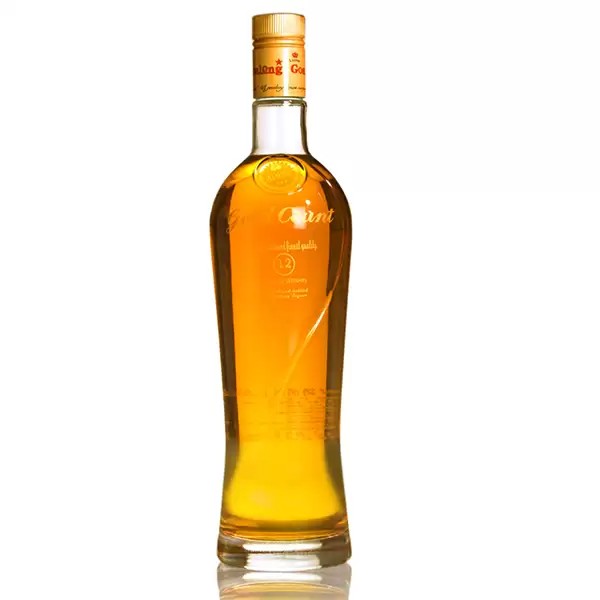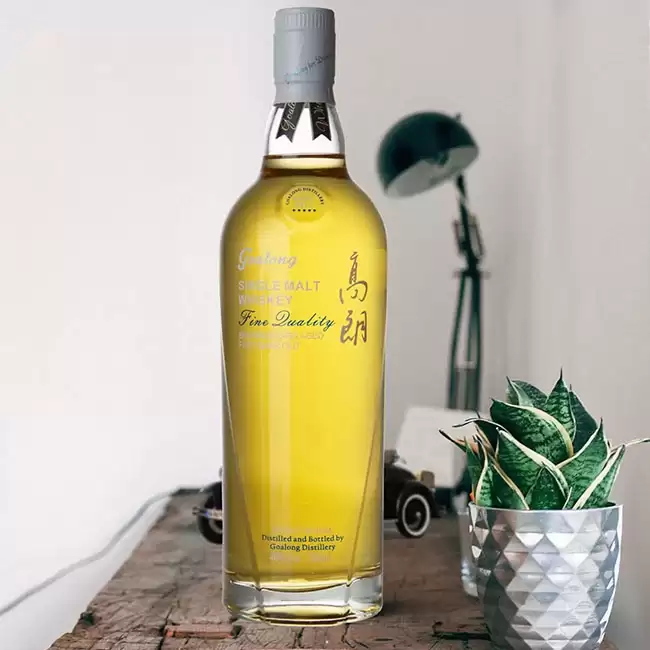Introduction

Whiskey, a beloved spirit enjoyed by many around the world, comes in various forms, including single malt and blended whiskey. In this article, we will delve into the world of whiskey, exploring the differences between single malt and blended varieties, as well as the art and science of whiskey tasting.
The History of Whiskey

Whiskey, a beloved spirit enjoyed by many around the world, has a rich and fascinating history. Understanding the origins of single malt whiskey and the rise of blended whiskey can provide valuable insights into the development of this timeless drink. Additionally, exploring key figures in whiskey history allows us to appreciate the individuals who have shaped the industry.
Origins of Single Malt Whiskey
Single malt whiskey traces its roots back to Scotland, where it originated in the late 18th century. The rugged Scottish landscape provided an ideal environment for cultivating barley, a key ingredient in whiskey production. The unique combination of climate and natural resources led to the birth of single malt whiskey.
Made exclusively from malted barley and distilled at a single distillery, single malt whiskey is known for its distinct flavors and characteristics. The traditional method involves aging the spirit in oak casks for a minimum of three years, allowing it to develop complexity and depth.
The Rise of Blended Whiskey
While single malt whiskey gained popularity in Scotland, blended whiskey emerged as a response to changing tastes and demands. In the mid-19th century, blenders began combining different types of whiskies to create new flavor profiles that appealed to a wider audience.
Blended whiskey typically consists of a mixture of malt whisky and grain whisky. Grain whisky is made from grains like corn or wheat and provides a lighter and smoother taste compared to malt whisky. By blending these two components together, blenders were able to achieve balanced flavors that appealed to both seasoned connoisseurs and newcomers alike.
Key Figures in Whiskey History
Throughout history, there have been several influential figures who have left their mark on the world of whiskey. One such figure is Aeneas Coffey, an Irish inventor who revolutionized distillation with his invention of the continuous still in 1830. This invention allowed for a more efficient and consistent production process, paving the way for the mass production of whiskey.
Another notable figure is Andrew Usher, a Scottish blender who is often credited with popularizing blended whiskey. Usher's dedication to experimenting with different blends and refining the art of blending helped establish blended whiskey as a staple in the industry.
These key figures, along with countless others, have played significant roles in shaping the history and evolution of whiskey. Their contributions continue to be celebrated and enjoyed by whiskey enthusiasts worldwide.
Understanding Single Malt Whiskey

Single malt whiskey is a type of whiskey that is made from malted barley and distilled at a single distillery. It is known for its distinct flavors and characteristics, making it a favorite among whiskey enthusiasts.
Definition and Characteristics of Single Malt Whiskey
Single malt whiskey is defined as a whiskey that is produced from malted barley at a single distillery. It must be distilled in pot stills and aged in oak barrels for a minimum of three years. Unlike blended whiskey, which combines different types of whiskies, single malt whiskey is made solely from malted barley.
Characteristics of single malt whiskey include rich and complex flavors, ranging from fruity and floral to smoky and peaty. Each distillery has its own unique production methods, resulting in distinct flavor profiles that can vary widely between brands.
Production Process of Single Malt Whiskey
The production process of single malt whiskey involves several key steps. First, the barley is soaked in water to initiate germination, which converts starches into fermentable sugars. The barley is then dried using hot air or peat smoke to stop the germination process.
Next, the dried barley is ground into a coarse flour called grist, which is mixed with hot water to extract sugars. This mixture, known as mash, undergoes fermentation where yeast converts sugars into alcohol over several days.
After fermentation, the liquid called wash is distilled in pot stills to separate alcohol from impurities. The resulting spirit undergoes aging in oak barrels for several years to develop its unique flavors.
Famous Single Malt Whiskey Brands (e.g. Glenlivet, Macallan)
There are numerous famous brands of single malt whiskey that have gained international recognition for their exceptional quality and craftsmanship.
One such brand is Glenlivet, which has been producing single malt whisky since 1824. Known for its smooth and fruity flavor profile, Glenlivet offers a range of expressions to cater to different preferences.
Another renowned brand is Macallan, which is highly regarded for its rich and complex single malt whiskies. Macallan uses only the finest sherry oak casks for aging, resulting in a distinctive flavor profile that combines notes of dried fruits, spices, and chocolate.
These brands, along with many others, showcase the diversity and excellence of single malt whiskey production.
Goalong Whisky: A Distinguished International Liquor Manufacturer
In the world of whiskey production, Goalong Whisky stands out as a distinguished international liquor manufacturer. Established in 2018 by UK Goalong Group, Goalong Whisky specializes in producing and exporting a wide range of liquors including whisky, brandy, vodka, gin, liqueurs, and more.
With a commitment to quality and craftsmanship, Goalong Whisky has gained recognition for its exceptional products. Whether you're looking for single malt or blended whiskey options, Goalong Whisky offers a diverse selection to cater to different tastes and preferences.
Enhancing Your Whiskey Journey
Whether you prefer the rich complexity of single malt whiskey or the balanced flavors of blended whiskey, exploring the world of whiskey is an exciting journey. By understanding the characteristics and production processes behind each type of whiskey, you can appreciate the artistry that goes into creating these fine spirits.
So raise your glass and embark on your own whiskey adventure. Cheers!
Exploring Blended Whiskey

Blended whiskey is a unique and popular category of whiskey that combines different types of whiskies to create a harmonious and balanced flavor profile. Unlike single malt whiskey, which is made from malted barley and produced at a single distillery, blended whiskey can be made from a combination of malted grains such as barley, corn, rye, or wheat.
Blended whiskey is known for its smoothness and versatility. It often exhibits a rich and complex flavor profile with notes of caramel, vanilla, oak, and spices. The blending process allows the master blender to create a consistent taste by combining different whiskies with varying characteristics.
The production process of blended whiskey involves several steps. First, the individual whiskies are distilled separately using different grains and distillation techniques. These whiskies are then aged in oak barrels for a certain period of time to develop their unique flavors. Finally, the master blender selects specific proportions of each whisky to create the desired blend.
Some famous blended whiskey brands include Johnnie Walker and Chivas Regal. Johnnie Walker is renowned for its range of blended Scotch whiskies, including the iconic Johnnie Walker Black Label and Johnnie Walker Blue Label. Chivas Regal is known for its luxurious blends such as Chivas Regal 12 Year Old and Chivas Regal 18 Year Old.
Blended whiskey offers a wide range of flavors and styles to suit different preferences. Whether you prefer a smooth and mellow sip or a bold and robust experience, there is a blended whisky that will satisfy your palate.
Single Malt vs Blended: Tasting Notes

When it comes to tasting notes, single malt whiskey and blended whiskey offer distinct flavor profiles that cater to different palates.
Flavor Profiles of Single Malt Whiskey
Single malt whiskey is known for its rich and complex flavors. It often has a smooth and velvety texture with notes of caramel, vanilla, and honey. The use of malted barley in the production process gives it a distinctive malty sweetness, along with hints of fruitiness such as apples or citrus. Depending on the region where it is produced, single malt whiskey can also showcase unique characteristics like smokiness in Islay whiskies or floral notes in Speyside whiskies.
Flavor Profiles of Blended Whiskey
Blended whiskey offers a more balanced and versatile flavor profile compared to single malt whiskey. It combines different types of whiskeys, including grain whiskies and single malts, to create a harmonious blend of flavors. Blended whiskey tends to be lighter and smoother on the palate, with flavors ranging from sweet and fruity to nutty and spicy. It often exhibits notes of vanilla, oak, dried fruits, and spices like cinnamon or nutmeg.
Tasting Techniques and Tips
To fully appreciate the complexities of both single malt and blended whiskeys, there are some tasting techniques you can employ:
1. Nose: Before taking a sip, gently swirl the whiskey in your glass to release its aromas. Take a moment to inhale deeply and identify the different scents that emerge.
2. Sip: Take a small sip of the whiskey and let it coat your tongue. Pay attention to the initial flavors that hit your palate.
3. Hold: Allow the whiskey to linger in your mouth for a few seconds before swallowing or spitting it out (if you're tasting multiple whiskeys). This will give you a chance to explore the different layers of flavors that unfold.
4. Evaluate: Consider the whiskey's taste, texture, and finish. Is it smooth or harsh? Are there any dominant flavors or subtle nuances? Does it leave a lingering aftertaste?
5. Water: Adding a few drops of water can help open up the whiskey's aromas and mellow out its flavors. Experiment with different dilutions to find your preferred balance.
Remember, tasting whiskey is a subjective experience, so feel free to trust your own palate and preferences. Whether you lean towards the complexity of single malt or the versatility of blended whiskey, both offer delightful tasting journeys.
The Connoisseur's Choice: Single Malt or Blended?

When it comes to choosing whiskey, there are several factors to consider. The decision between single malt and blended whiskey is a matter of personal preference and taste. Some factors to consider when making this choice include the complexity of flavors, the smoothness of the drink, and the occasion for which it will be consumed.
For those who enjoy a more robust and intense flavor profile, single malt whiskey is often the preferred choice. Single malt whisky is made from malted barley and distilled in a single distillery. It is known for its rich and unique flavors that are influenced by factors such as the type of barley used, the water source, and the aging process in oak barrels. Brands like Glenlivet and Macallan are renowned for their exceptional single malt whiskies.
On the other hand, blended whiskey offers a harmonious blend of different whiskies from multiple distilleries. Blended whisky combines different grain whiskies with malt whiskies to create a balanced flavor profile that appeals to a wide range of palates. Brands like Johnnie Walker and Chivas Regal are known for their expert blending techniques that result in smooth and approachable whiskies.
When selecting a single malt whiskey, it's important to consider your palate preferences. If you enjoy bold and smoky flavors, opt for an Islay single malt like Laphroaig or Ardbeg. For those who prefer sweeter notes with hints of fruitiness, Speyside single malts like Glenfiddich or Balvenie are excellent choices. Highland Park from Orkney offers a well-rounded option with a balance of smoky and sweet flavors.
For different occasions, blended whiskey can be a versatile choice. For casual gatherings or social events, lighter blended whiskies like Ballantine's or Famous Grouse can be enjoyed neat or in cocktails. When celebrating special occasions or gifting, premium blended whiskies like Johnnie Walker Blue Label or Chivas Regal 18 Year Old make for a sophisticated choice.
Conclusion
The Versatility of Single Malt and Blended Whiskey
Single malt and blended whiskey offer a wide range of flavors and characteristics, making them versatile choices for whiskey enthusiasts. Whether you prefer the rich, complex flavors of single malt or the smoothness and balance of blended whiskey, there is something for everyone to enjoy.
Goalong Whisky: A Distinguished International Liquor Manufacturer
Goalong Whisky is a distinguished international liquor manufacturer that has been producing and exporting high-quality spirits since 2018. As a one-stop professional liquor manufacturer, they offer a wide range of products including whisky, brandy, vodka, gin, liqueurs, and other liquors. With their commitment to excellence in craftsmanship and quality control, Goalong Whisky is a trusted name in the industry.
Enhancing Your Whiskey Journey
To enhance your whiskey journey, it's important to explore different types of whiskey and develop your palate through tasting techniques and tips. Whether you choose single malt or blended whiskey, take the time to appreciate the unique flavors and aromas each bottle has to offer.
Remember to savor each sip responsibly and enjoy the experience with friends or loved ones who share your passion for fine spirits.

